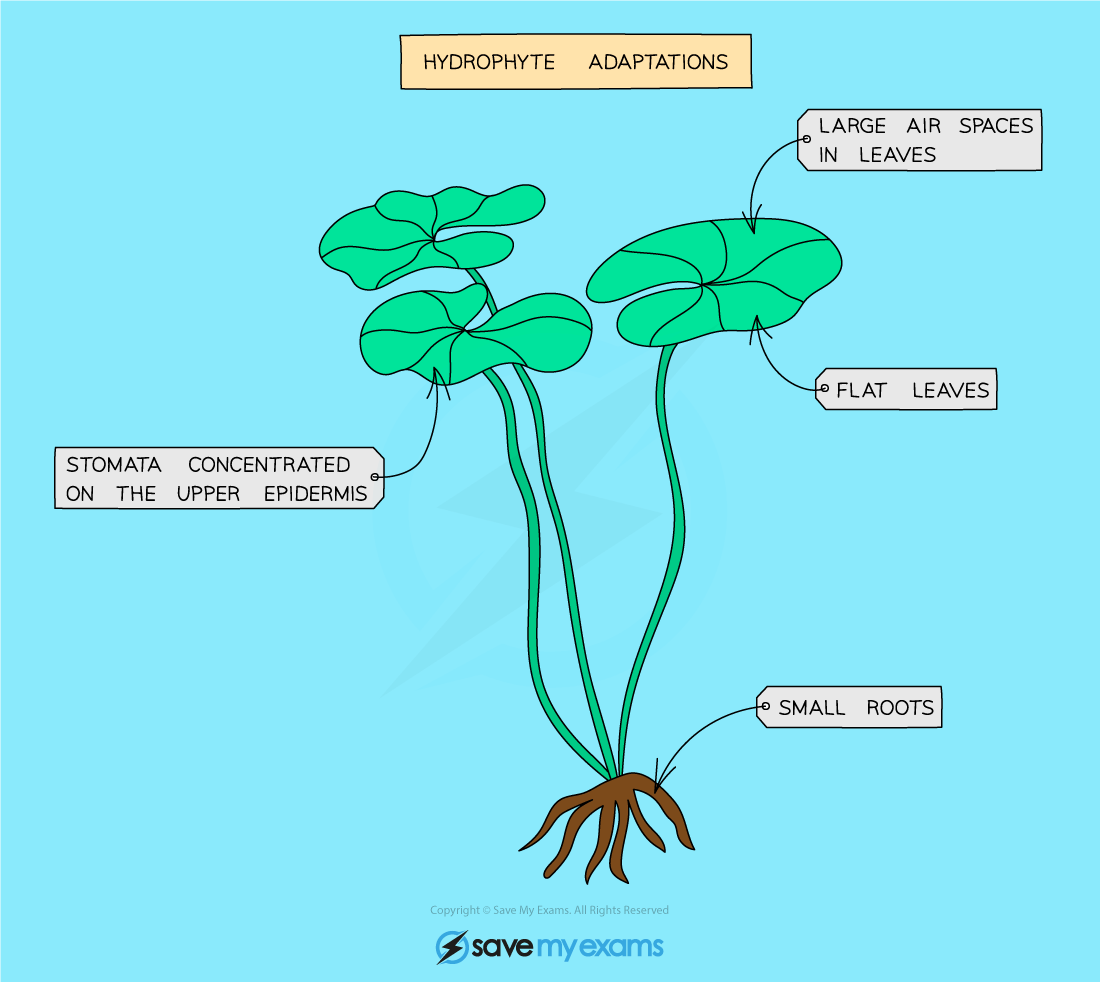- 翰林提供学术活动、国际课程、科研项目一站式留学背景提升服务!
- 400 888 0080
CIE IGCSE Biology: 复习笔记:18.1.3 Adaptive Features: Extended
CIE IGCSE Biology: 复习笔记:18.1.3 Adaptive Features: Extended
Hydrophytes & Xerophytes: Extended
Hydrophytes
- Plants adapted to live in extremely wet conditions
- Common adaptations include:
- Large air spaces in their leaves to keep them close to the surface of the water where there is more light for photosynthesis
- Small roots as they can also extract nutrients from the surrounding water through their tissues
- Stomata usually open all the time and mainly found on the upper epidermis of the leaf where they can exchange gases much more easily with the air
 Hydrophytes are adapted to live in wet conditions such as ponds
Hydrophytes are adapted to live in wet conditions such as ponds
Xerophytes
- Plant adapted to live in extremely dry conditions
- Common adaptations include:
- Thick waxy cuticle - the cuticle cuts down water loss in two ways: it acts as a barrier to evaporation and also the shiny surface reflects heat and so lowers temperature
- Sunken stomata: stomata may be sunk in pits in the epidermis; moist air trapped here lengthens the diffusion pathway and reduces evaporation rate
- Leaf rolled with stomata inside and an inner surface covered in hairs - traps moist air and prevents air movement across stomata which reduces transpiration
- Small leaves: many xerophytic plants have small, needle-shaped leaves which reduce the surface area and therefore the evaporating surface
- Extensive shallow roots allowing for the quick absorption of large quantities of water when it rains
- Thickened leaves or stems which contain cells that store water
 Xerophytes are adapted to live in extremely dry conditions such as deserts
Xerophytes are adapted to live in extremely dry conditions such as deserts
转载自savemyexams

最新发布
© 2026. All Rights Reserved. 沪ICP备2023009024号-1









